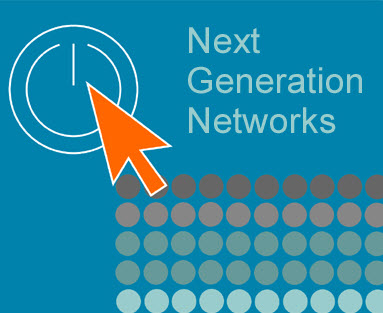
Preface: The rising tides of big data, video, and cloud computing are driving tremendous demand for faster and more efficient networks. We delve into how things like software-defined networks (SDN) and new wireless technologies are enabling business transformation.
Next Generation Networks (NGNs) have been a talking point for the last few years. What are the features and the advantages of NGNs? Scott Reeves will talk about them with us. (What is the exact NGNs? You can refer to Next-generation network at Wikipedia: https://en.wikipedia.org/wiki/Next-generation_network)
As we continually churn out more and more data that must be transmitted over our networks, the challenge of handling the onslaught fuels  research and development of Next Generation Networks. A Next Generation Network is usually defined as a change in the core network technology to a packet-switched network. Let’s review a little of the background of telecommunications networks and then take a look at some of the key features of Next Generation Networks (NGNs).
research and development of Next Generation Networks. A Next Generation Network is usually defined as a change in the core network technology to a packet-switched network. Let’s review a little of the background of telecommunications networks and then take a look at some of the key features of Next Generation Networks (NGNs).
Circuit-switched vs. Packet-switched
Telecommunication networks were originally designed for voice traffic. A person calling another person essentially creates a complete circuit from one phone to the other. The switch identifies which path the circuit should take and assigns that circuit to the caller for the duration of the call. This type of switching is generally called a circuit-switched network.
The internet is founded on IP, so it is by nature, packet-switched. Circuit-switched networks and packet-switched networks are inherently different. In a circuit switched network, a connection between two nodes is held for the duration of the call; no other connections are possible, even if there is no traffic on the line. In a packet-switched network, there is no need to make a connection; the packets can be sent as required to other users.
The advantage of the circuit-switched network is a built in quality of service; if the switch cannot take any more traffic, then the call is not completed. Once the call is in progress, the circuit is kept until the caller hangs up. The disadvantage is that it is inefficient when there is not a constant stream of data being transmitted. In contrast, a packet switched network has (traditionally) had best effort delivery of packets, but it does not need to establish a constant connection to the other user(s).
One solution to the problems of packet-switched and circuit-switched networks is to run two different networks; the older circuit-switched type network for voice only, and a newer packet-switched network for all other data. This is fairly costly, as there are basically two separate pieces of infrastructure that need to be maintained. The obvious solution is to run only one network. An NGN is another solution to this problem.
NGN Key Components
As was mentioned above, Next Generation Networks are packet-switched and use IP at the network layer. The centre of the network is the IP multimedia service (IMS). This provides an independent platform through which access services such as 4G can use the network. The principle idea is to have seamless communication; people can be connected anywhere and anytime. A key component of this is the Session Initiation Protocol (SIP). SIP acts as a signalling protocol. It differs from other protocols such as H.323 in that it was designed by the Internet Engineering Task Force (IETF) specifically for IP. SIP is an enabling protocol that allows applications such as IPTV, VoIP and messaging to be easily integrated.
The implementation of LTE or WiMAX works towards adoption of NGNs. The reason for this is simple. LTE and WiMAX were built from the start to use an all IP core network. LTE does not have a native voice service (though several are proposed). The assumption for WiMAX and LTE is simple: voice traffic is data.
The main issue with treating voice traffic as data traffic is being able to distinguish it from other traffic. This is where technologies such as DiffServ (or DS) can be used. DS can assist in separating out traffic that has different Quality of Service requirements. An example may be separating out voice traffic, which requires a low level of packet loss but also a low delay, and web browsing traffic, which can tolerate delay but cannot tolerate data loss.
Next Generation Networks represent a significant departure from the older style of networks. There are other areas that form part of NGN, but this post touches on the critical areas. This includes the use of SIP as a signaling protocol, and some of the advantages of a Next Generation Network.
—Reviews from https://www.techrepublic.com/
More Topics Related to Networks:
802.11ac Wi-Fi vs. the 802.11n
What Cisco ONE Enterprise Networks Architecture Can Do for Modern Networks?
Cisco Chambers: “IoE is the Next Big Transition for Businesses”


